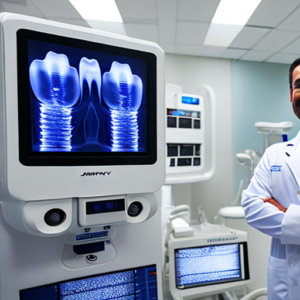Do you wince every time you brush your teeth? Does the sensation of brushing trigger a sharp, shooting pain – a symptom often referred to as sensitive teeth? Millions experience this discomfort, and it’s frequently rooted in enamel erosion, gum recession, or even underlying dental conditions. The good news is that modern electric toothbrushes, particularly those with adjustable settings, can significantly alleviate this issue by allowing you to precisely control the force of your cleaning. But simply turning on a brush isn’t enough; understanding and adjusting your brush speed settings is crucial for achieving optimal results without exacerbating your sensitivity.
Understanding Tooth Sensitivity
Tooth sensitivity, technically known as dentin hypersensitivity, occurs when the protective outer layer of enamel – or the cementum protecting the root – is compromised. This exposes the underlying dentin, which contains microscopic tubules that lead directly to the nerve of the tooth. Stimuli like hot and cold temperatures, acidic foods and drinks, or even brushing can trigger a signal through these tubules, resulting in pain. According to the American Dental Association, approximately 20-40 percent of adults experience some degree of tooth sensitivity.
The causes of this sensitivity are diverse. Enamel erosion, often caused by aggressive brushing, acidic beverages (citrus juice, soda), or teeth grinding (bruxism), is a leading culprit. Gum recession exposes the root surface, which doesn’t have enamel protection. Other factors include dental procedures like fillings or whitening treatments and even minor cracks in the tooth structure. The key to managing sensitive teeth lies in minimizing irritation and protecting the exposed dentin.
Electric toothbrushes, specifically those with variable speed settings, offer a targeted solution. They allow you to reduce the intensity of brushing, preventing further damage while still effectively cleaning your teeth. Choosing the right brush and mastering its settings can dramatically improve your oral hygiene experience and alleviate painful sensitivity. This article will guide you through understanding these settings and selecting the best electric toothbrush for sensitive teeth.
Decoding Brush Speed Settings: Oscillation, Pulsation, and Pressure
Oscillation
The primary cleaning action of most electric toothbrushes is oscillation – the back-and-forth movement of the brush head. Higher oscillation speeds are effective at removing plaque and surface stains. However, for sensitive teeth, excessive oscillation can be intensely irritating. The frequency of this movement directly impacts how much pressure you apply naturally when brushing.
Generally, starting with a lower oscillation setting (e.g., 3000-4000 strokes per minute) is recommended for those with sensitive teeth. This allows the brush head to effectively clean while minimizing the jarring impact on your gums and dentin. You can gradually increase the speed if you feel comfortable, but always prioritize a gentle approach.
Pulsation
Many electric toothbrushes also incorporate pulsation – rhythmic bursts of water delivered through the brush head. This feature helps to dislodge food particles and stimulates saliva production, which naturally neutralizes acids in the mouth. For sensitive teeth, pulsation settings should be used cautiously. A low pulsation setting (e.g., 200-400 pulsations per minute) can aid in cleaning without adding extra pressure or vibration.
The key is to experiment to find what works best for you. Some individuals are particularly sensitive to the water bursts, while others find it beneficial. Pay close attention to how your teeth and gums respond when adjusting this setting.
Pressure Sensors & Smart Technology
Modern electric toothbrushes often include pressure sensors that alert you when you’re brushing too hard. These sensors typically use small vibrations or visual cues (like a flashing light) to indicate excessive force. This is incredibly valuable for sensitive teeth as it prevents you from unknowingly applying more pressure, which can exacerbate enamel erosion. Many models also offer smart technology that tracks your brushing habits and provides personalized feedback through an app, further enhancing control.
Top Electric Toothbrushes for Sensitive Teeth (2024)
| Toothbrush Model | Key Features for Sensitive Teeth | Approximate Price |
|---|---|---|
| Philips Sonicare ProtectiveClean 6100 | Sonic Vibration, Pressure Sensor, Personalized Brushing Modes (including Gentle) | $99.99 – $129.99 |
| Oral-B Pro 3700 Sensitive Care | Oscillation, Pressure Sensor, Soft Brush Heads, Quiet Operation | $69.99 – $89.99 |
| Colgate Hum Smart Dial | Smart Dial Technology, Pressure Sensing, Customizable Modes for Sensitivity | $129.00 – $149.00 |
| Waterpik Complete Rechargeable Electric Toothbrush | Oscillation & Pulse Technology, Multiple Brushing Modes including Sensitive, Built-in Timer | $79.99 – $99.99 |
Note: Prices are approximate and may vary depending on the retailer.
Tips for Brushing with an Electric Toothbrush for Sensitive Teeth
- Start Slow: Begin with the lowest speed setting and gradually increase if needed.
- Gentle Pressure: Let the brush do the work, rather than applying force. Imagine you’re massaging your teeth and gums.
- Short Strokes: Use short, circular motions instead of scrubbing back and forth.
- Focus on Technique: Pay attention to brushing all surfaces – front, back, top, and bottom – ensuring even coverage.
- Brush for 2 Minutes: Follow recommended dentist guidelines for brushing duration.
- Use a Soft Brush Head: Choose brushes with soft or extra-soft bristles specifically designed for sensitive teeth.
- Consider Fluoride Toothpaste: Use a toothpaste formulated for sensitive teeth that contains fluoride to strengthen enamel.
- Don’t Overbrush: Brushing too frequently (more than twice daily) can irritate gums and exacerbate sensitivity.
Conclusion
Finding the sweet spot for brush speed settings on your electric toothbrush is a personalized journey. By understanding the principles of oscillation, pulsation, and pressure, and by carefully experimenting with different settings, you can significantly reduce tooth sensitivity and achieve a comfortable, effective clean. Remember that gentle brushing techniques are just as important as selecting the right brush. Investing in an electric toothbrush with adjustable speed settings and incorporating these tips into your daily routine will go a long way towards protecting your teeth and gums.
Key Takeaways
- Tooth sensitivity is common, often stemming from enamel erosion.
- Electric toothbrushes with adjustable speed settings offer precise control to minimize irritation.
- Start with low oscillation and pulsation speeds and gradually increase as tolerated.
- Pressure sensors are invaluable for preventing excessive brushing force.
- Proper brushing technique – gentle pressure, short strokes – is crucial alongside the right brush settings.
Frequently Asked Questions (FAQs)
- Q: How do I know if my sensitivity is getting worse? A: If you notice a significant increase in pain or discomfort while brushing, reduce the brush speed and consider consulting your dentist.
- Q: Can I use an electric toothbrush with braces? A: Yes, but choose a brush head specifically designed for braces to clean around brackets effectively.
- Q: How often should I replace my brush head? A: Replace your brush head every 3-4 months or sooner if the bristles become frayed.
- Q: What is the best toothpaste for sensitive teeth? A: Look for toothpastes containing fluoride and ingredients like potassium nitrate or stannous fluoride, which help block pain signals to the nerves.
















